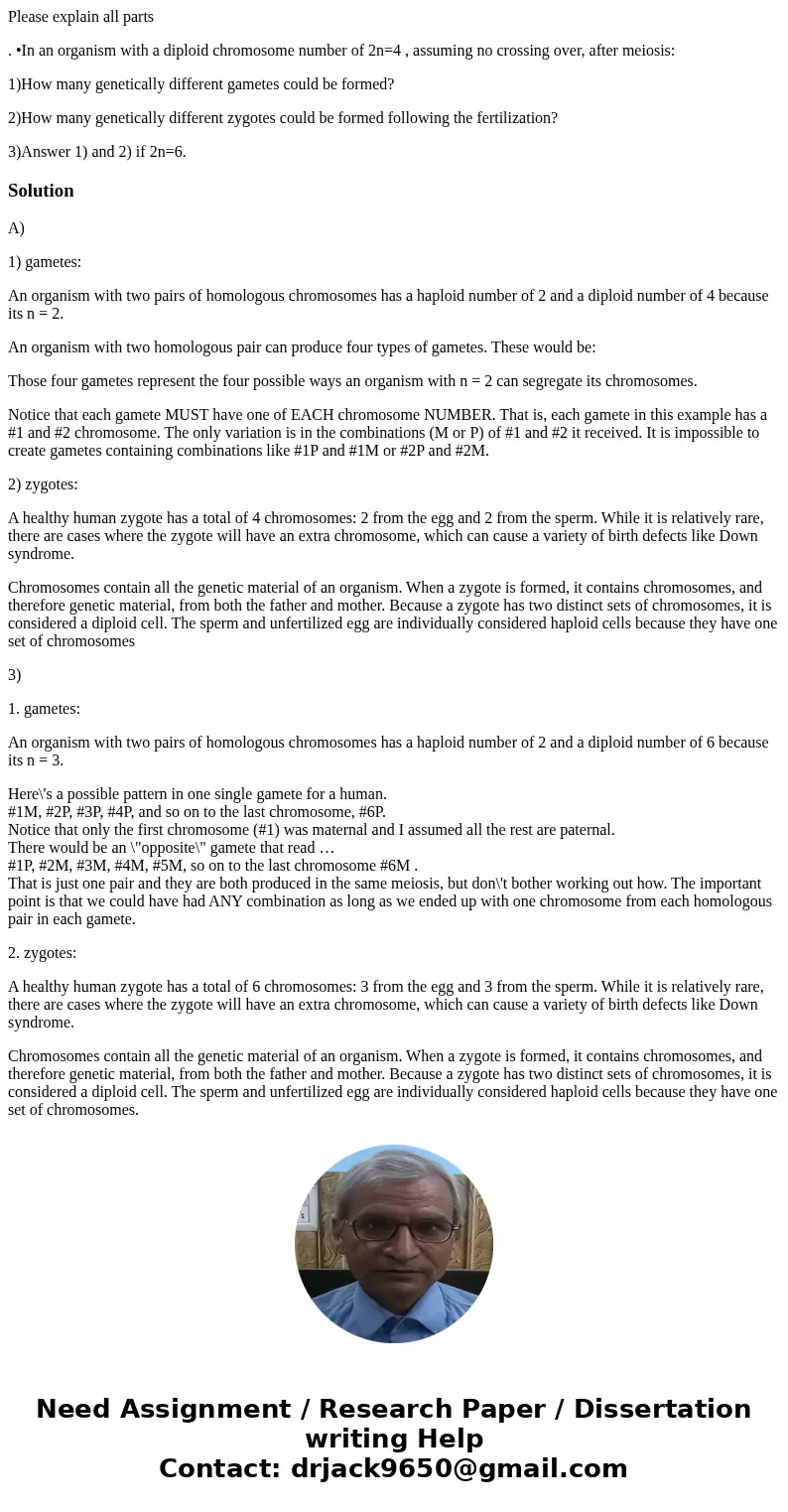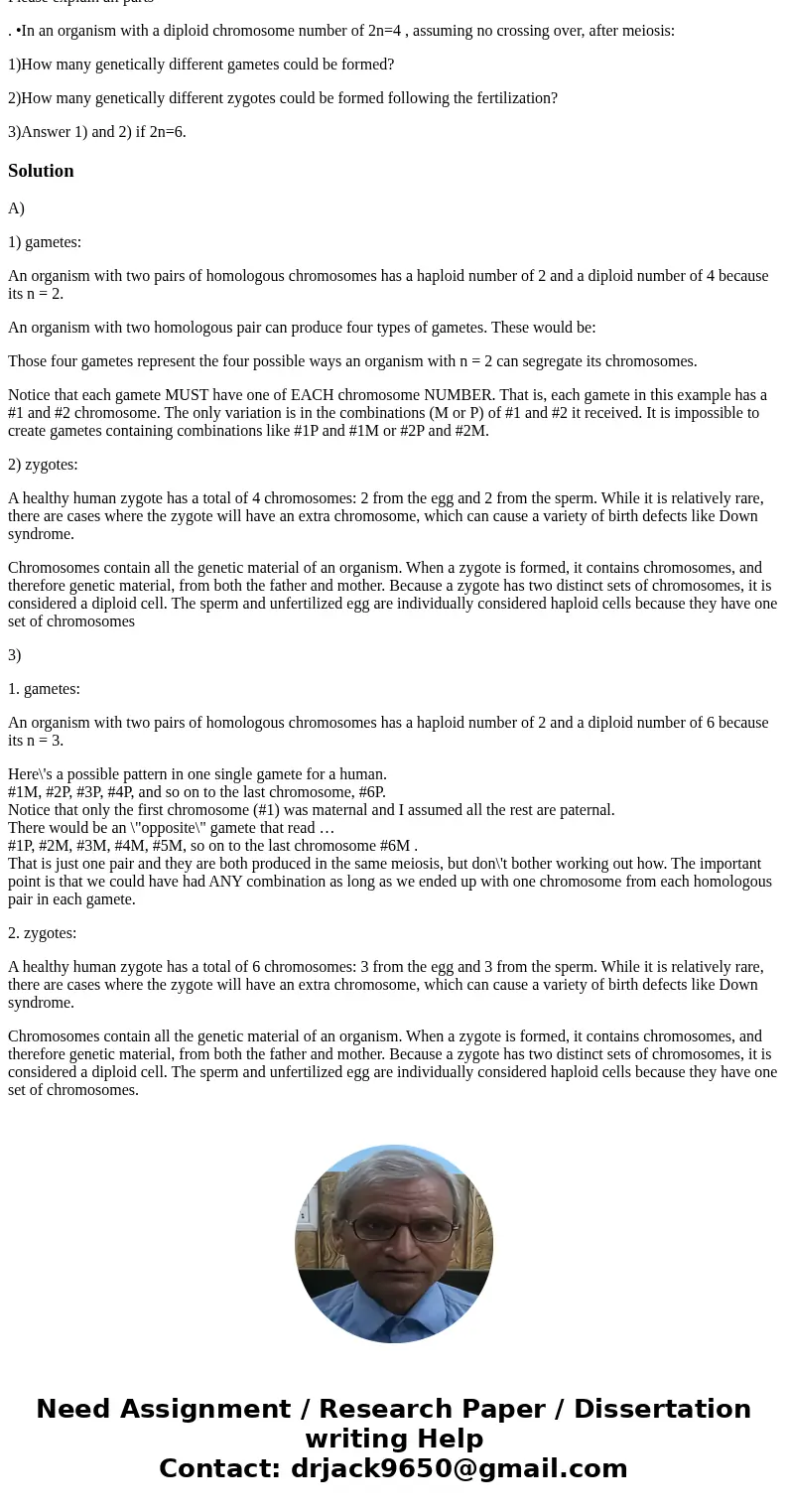Please explain all parts In an organism with a diploid chro
Please explain all parts
. •In an organism with a diploid chromosome number of 2n=4 , assuming no crossing over, after meiosis:
1)How many genetically different gametes could be formed?
2)How many genetically different zygotes could be formed following the fertilization?
3)Answer 1) and 2) if 2n=6.
Solution
A)
1) gametes:
An organism with two pairs of homologous chromosomes has a haploid number of 2 and a diploid number of 4 because its n = 2.
An organism with two homologous pair can produce four types of gametes. These would be:
Those four gametes represent the four possible ways an organism with n = 2 can segregate its chromosomes.
Notice that each gamete MUST have one of EACH chromosome NUMBER. That is, each gamete in this example has a #1 and #2 chromosome. The only variation is in the combinations (M or P) of #1 and #2 it received. It is impossible to create gametes containing combinations like #1P and #1M or #2P and #2M.
2) zygotes:
A healthy human zygote has a total of 4 chromosomes: 2 from the egg and 2 from the sperm. While it is relatively rare, there are cases where the zygote will have an extra chromosome, which can cause a variety of birth defects like Down syndrome.
Chromosomes contain all the genetic material of an organism. When a zygote is formed, it contains chromosomes, and therefore genetic material, from both the father and mother. Because a zygote has two distinct sets of chromosomes, it is considered a diploid cell. The sperm and unfertilized egg are individually considered haploid cells because they have one set of chromosomes
3)
1. gametes:
An organism with two pairs of homologous chromosomes has a haploid number of 2 and a diploid number of 6 because its n = 3.
Here\'s a possible pattern in one single gamete for a human.
#1M, #2P, #3P, #4P, and so on to the last chromosome, #6P.
Notice that only the first chromosome (#1) was maternal and I assumed all the rest are paternal.
There would be an \"opposite\" gamete that read …
#1P, #2M, #3M, #4M, #5M, so on to the last chromosome #6M .
That is just one pair and they are both produced in the same meiosis, but don\'t bother working out how. The important point is that we could have had ANY combination as long as we ended up with one chromosome from each homologous pair in each gamete.
2. zygotes:
A healthy human zygote has a total of 6 chromosomes: 3 from the egg and 3 from the sperm. While it is relatively rare, there are cases where the zygote will have an extra chromosome, which can cause a variety of birth defects like Down syndrome.
Chromosomes contain all the genetic material of an organism. When a zygote is formed, it contains chromosomes, and therefore genetic material, from both the father and mother. Because a zygote has two distinct sets of chromosomes, it is considered a diploid cell. The sperm and unfertilized egg are individually considered haploid cells because they have one set of chromosomes.


 Homework Sourse
Homework Sourse